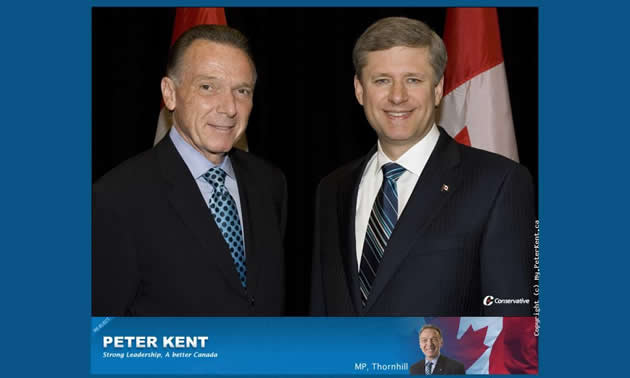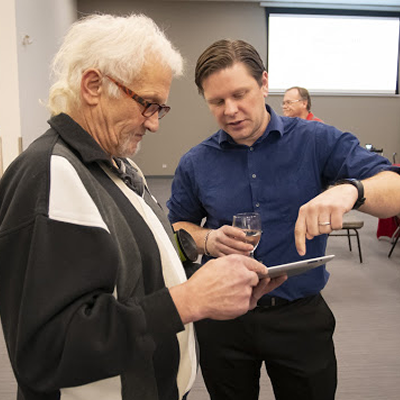Environment Minister changes emission rules for coal-fired plants

Peter Kent with Prime Minister Stephen Harper.
After a year of tough negotiations with companies and premiers that tested Ottawa’s resolve to fight climate change, environment minister Peter Kent is finally ready to present the final version of regulations to curtail greenhouse gas emissions from the coal-fired electricity sector.
Kent is travelling to Saskatoon today to present a weaker version of the regulations he drafted a year ago, The Canadian Press has learned.
Multiple sources say the new performance standard for coal plants will not be as strict as initially proposed.
In draft regulations put forward for discussion in August 2011, Kent proposed that new coal plants only be allowed if they can emit less than 375 tonnes of carbon dioxide per gigawatt hour of electricity generated.
In the final version, that standard is likely to be relaxed to about 420 tonnes instead of 375.
Sources also say the time allowed for old plants to meet the new standard will be about 50 years – instead of the originally proposed 45 years.
All in all, the new rules are designed to ensure coal-generated electricity is as clean as natural gas, mainly by steering plants to adopt new technology such as carbon capture and storage.
But the rules are also meant to give provinces some flexibility in how they will deal with their coal-fired electricity.
Already, Nova Scotia has negotiated a separate deal with Ottawa to handle coal in its own way, while meeting the same end goals set by the federal government.
Saskatchewan has announced it intends to put together a similar deal, and Alberta is expected to head down the same road.
Those three provinces are the most dependent in Canada upon coal for their electricity, and have argued that Ottawa’s original rules would penalize them unfairly.
But environmentalists as well as the Ontario government have been urging Ottawa not to lose its resolve with the coal regulations, saying those rules will set the tone for rules in the oil and gas sector expected some time next year.
“For us, if they do weaken them (the coal regulations) from the draft, it’s really troubling for the regulations that are coming next,” said P.J. Partington, a climate change policy analyst at the Pembina Institute. “If they’re willing to take such an approach with coal, then we can only imagine what will happen with oil and gas.”
The federal government is taking a sector-by-sector approach to reducing greenhouse gases. Instead of imposing a tax on carbon emissions, or developing a cap-and-trade market that would reward clean energy over high emissions, Ottawa is gradually imposing rules and restrictions on emissions in each polluting sector of the economy.
So far, it has rolled out limits for the auto sector and renewable fuels. Coal has been the trickiest sector so far.
But the remaining sectors, especially oil and gas, are expected to be even thornier, with Alberta’s oilpatch already resisting federal attempts to regulate. Draft regulations are expected next year, possibly in the spring.
Canada has committed to reducing its emissions by 607 megatonnes by 2020, and Kent frequently touts his sector-by-sector approach as the main way for Canada to meet that goal.
However, it will take decades for the coal regulations to begin to have a significant impact on emissions. Even the draft regulations only anticipated emissions reductions of 31 megatonnes by 2020. The new version will likely promise to deliver less than 30 megatonnes by that time, with more intense reductions in later decades as old coal plants come off stream.
Source: Canadian Press




